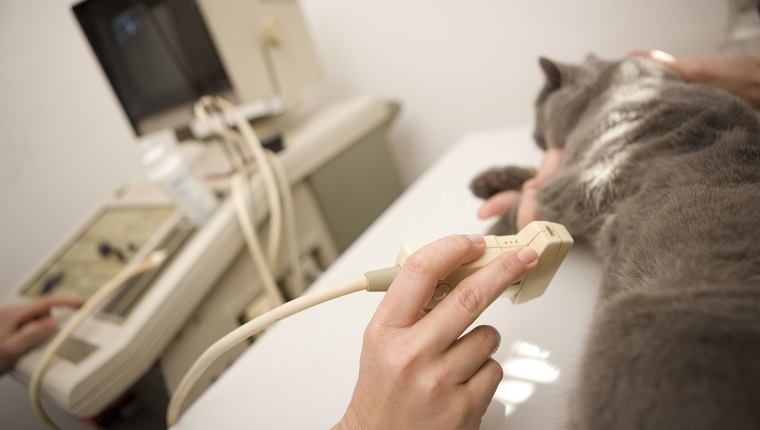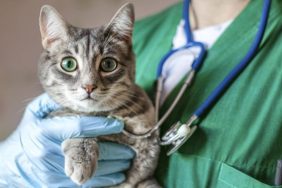Bile duct cancer in cats is a malignant form of cancer that can develop in the lining of the liver’s bile ducts and within the liver’s bile ducts themselves. It can spread quickly to other organs in the body and is often difficult to treat successfully.
While it does not seem to target cats of a specific breed more than others, the disease does statistically affect female cats and elderly cats more than younger kitties.
If you see signs that your cat might be suffering from cancer, then you must consult your veterinarian for a proper diagnosis and course of treatment. Here’s what you should know about the symptoms, causes, and treatments of bile duct cancer in cats.
Symptoms Of Bile Duct Cancer In Cats
Bile duct cancer in cats often produces the primary symptom of a swollen abdomen.
Some of the other symptoms include:
- Being less active than usual
- Less of an appetite than usual
- Drinking and urinating a lot
- Vomiting
- Skin becoming yellow (jaundice)
There are two types of tumors that can develop in a cat’s bile duct. The more common and less dangerous tumors are biliary adenomas. They may never cause noticeable symptoms unless they grow large enough to put pressure on a cat’s other organs.
Biliary carcinoma tumors are the more dangerous type, as they are malignant and can spread to other parts of the body quickly.
Causes Of Bile Duct Cancer In Cats

Vets frequently attribute bile duct cancer in cats to unknown factors.
Some of the common suspected causes include parasite infestation, exposure to certain chemicals or poisons, and exposure to carcinogens in the environment.
Veterinary Treatments
If you fear that your cat might be suffering from bile duct cancer, your veterinarian will want to carry out a full physical examination.
Your vet will also ask questions about your kitty’s medical history along with trying to figure out if there’s a chance they’ve recently suffered exposure to any environmental carcinogens.
Vets normally order blood, urine, and electrolyte tests are normally ordered when forming a diagnosis. Additionally, they’ll analyze levels of enzymes in the liver along with checking to see if there are any blood clotting issues present.
Vets can use X-rays and ultrasounds to check the status of a cat’s liver and abdomen. They’ll also likely suggest a biopsy of the liver.
Treatment is based around removing parts of the liver. Up to 75 percent of a cat’s liver can sometimes be removed. This is a surgical procedure.
Unfortunately, many cats do not recover. For kitties undergoing treatment, it is important to maintain regular vet visits to monitor the levels of enzymes in the liver.
Have you ever had a cat who suffered from bile duct cancer? What kinds of treatments did your vet suggest? Tell us all about it in the comments below.









